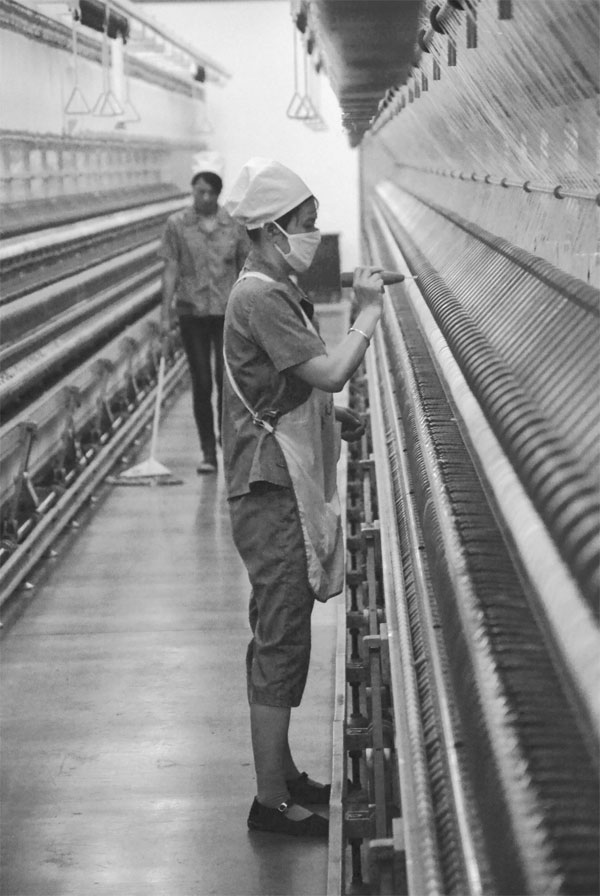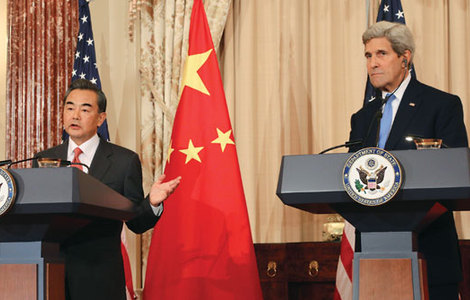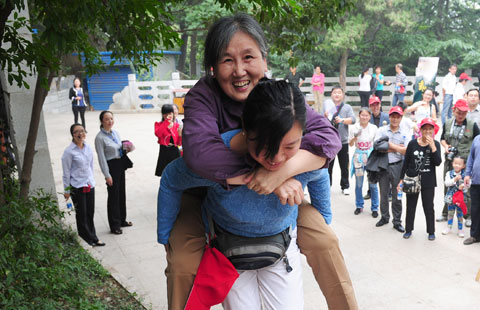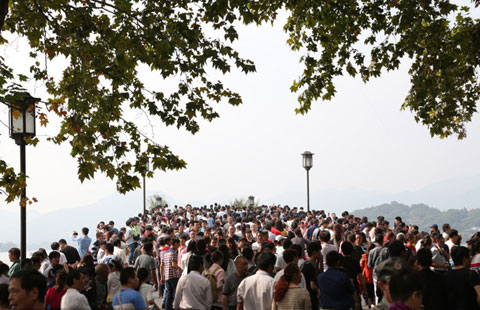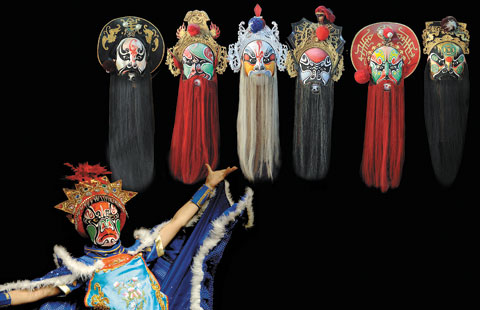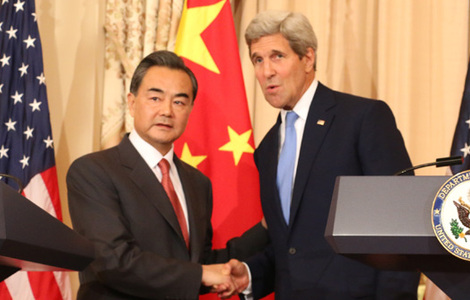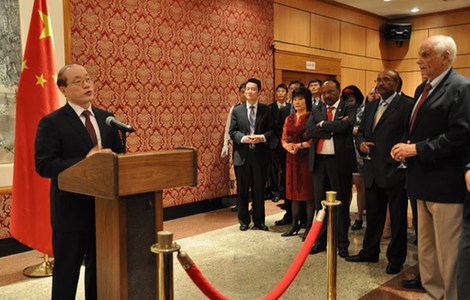Xinjiang corps focuses on mission
Updated: 2014-10-03 12:58
By Gao Bo in Urumqi(China Daily USA)
|
||||||||
The Xinjiang Production and Construction Corps (XPCC), the semi-military governmental organization that built farms, cities and towns, is strengthening its mission to maintaining national unity and developing the economy, said Cheng Jiazhu, deputy commander of the corps as it marked its 60th anniversary.
Now XPCC is subdivided into 14 divisions, 176 regiments and farms, which guard 2,019 kilometers (1,254 mils) of the borderline. The divisions are scattered in Xinjiang's 14 prefectures and cities. It has the responsibilities for production and security.
While inspecting Xinjiang in April, President Xi Jinping visited XPCC's sixth division. He said more effort is needed to build the corps into a stabilizer for the country's border areas, a melting pot that integrates various ethnic groups, so it can establish a model region showcasing advanced productivity and culture.
Following the initial mission of XPCC, the regiments and farms were all settled in the most remote and wild places, Cheng said, "It was to fulfill the mission of consolidating border defense, also not to scramble resources with locals," he said.
XPCC has made remarkable achievements during the past six decades.
The GDP for XPCC in 2013 was 150 billion yuan ($24.44 billion), 218 times what is was in 1954.
With agriculture being the primary industry of XPCC, the use of farming machinery - which represents the extent of modernized agriculture - reached 92 percent in 2013. XPCC produces 1.46 million tons of cotton, nearly half of the region's and one-fifth of the country's total.
To tackle water shortage, XPCC has developed water-saving irrigation technique since the 1990s. Three quarters of the irrigation area under XPCC was equipped with water-saving irrigation facilities, reaching 12.5 million mu (833,333 hectares) in 2013.
"In this field, XPCC is standing in the front in China, even in the world," said Zhu Xinxiang, director of XPCC's development and reform committee. "Also, the focus on agriculture progressed the industrial development."
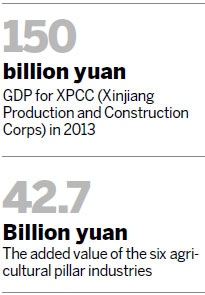
Among the 14 listed companies under XPCC, half are related to agriculture. Six pillar industries have been established, including textile, food and drinks, farming machineries, building material, mineral exploration and chemical products. The industries added value reached 42.7 billion yuan in 2013.
XPCC has established seven county-level cities at the headquarters of divisions, which is a good development model for XPCC to attract talent and promote urbanization, said Cheng.
The corps was under the command of the People's Liberation Army (PLA) when it was founded in 1954. Its mission was to develop frontier regions, promote economic development, ensure social stability and ethnic harmony, and consolidate border defense. It was drawn from the traditional reclamation and settlement system, a policy of settling military units in frontier areas so that they become self-sufficient in food in the Tang and Qing dynasties.
In the next 20 years, XPCC developed rapidly from 175,000 soldiers to more than 2.2 million. "Talented people with passion and dreams were attracted to the region, in spite of the area being barren," Cheng said.
XPCC was disbanded in 1975 and re-founded in 1982. It was separated from the PLA and became a unit administered by the central government and the Xinjiang Uygur autonomous region.
When XPCC was disbanded, many talented members went back to their hometown and was a great loss to Xinjiang, said Cheng, "The separatists' activities in Xinjiang caused the central government to make the decision of re-establishing XPCC," he said.
An exhibition commemorating the 60th anniversary of XPCC opened on Aug 15 at the National Museum of China in Beijing.
The exhibition, called Reclamation Endeavors and the Chinese Dream, features more than 160 cultural relics and some 200 photos reflecting the development of the XPCC by several generations.
"Today's prosperity of Xinjiang is built on the basis of yesterday's endeavors," said Wang Lei, son of Wang Hanxing, who founded the XPCC with Wang Zhen in 1954.
Wang Lei was born in 1942 and moved to Xinjiang with his father's troops in 1949. He witnessed and experienced the foundation of XPCC as a child.
"I lived in Xinjiang for more than 20 years," Wang said, "There is no other place that I would want to go to over and over again other than Xinjiang ... Behind each photo and cultural relic here, there is a moving story showing XPCC's loyalty to the country, selfless devotion, hard work and enterprising spirit," he added.
gaobo@chinadaily.com.cn
|
The factory floor of a textile company at an economic and technological development zone of the Xinjiang Production and Construction Corps. Gao Bo / China Daily |
(China Daily USA 10/03/2014 page5)
Most Viewed
Editor's Picks

|

|

|

|

|

|
Today's Top News
Xiamen dancers dazzle Ft Meade
'One Country, Two Systems' vital
China, US voice commitment to ties
US visas hinder talent search: expert
IMF calls for more global growth
GM to invest $14bn in China
HK official to meet with Occupy Central students
Evernote announces new products
US Weekly

|

|
